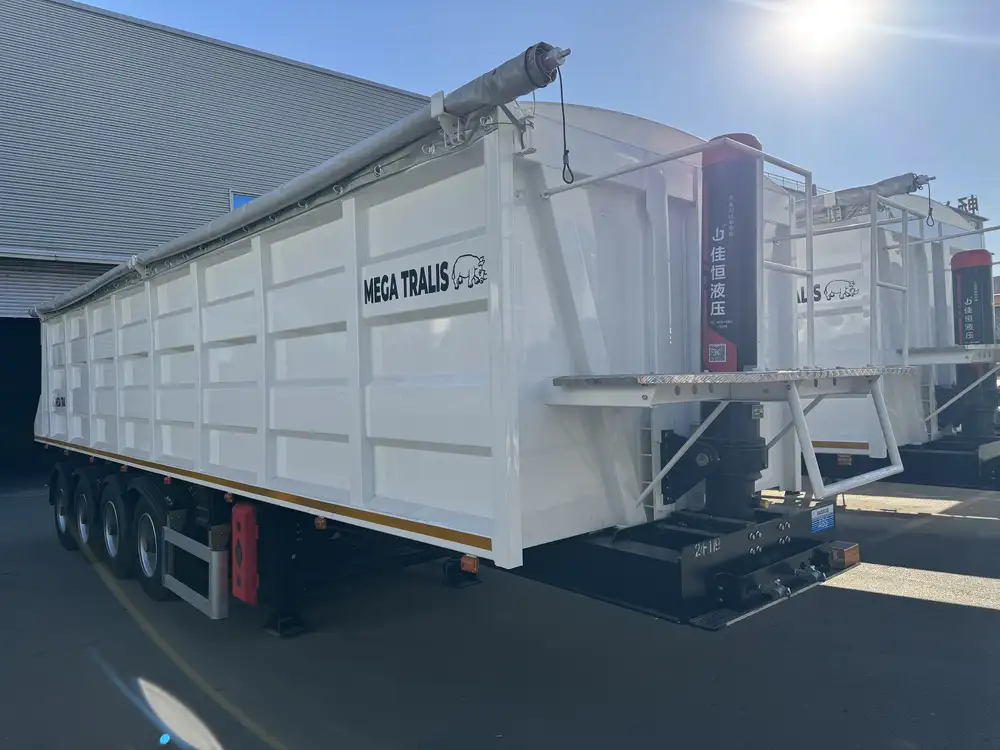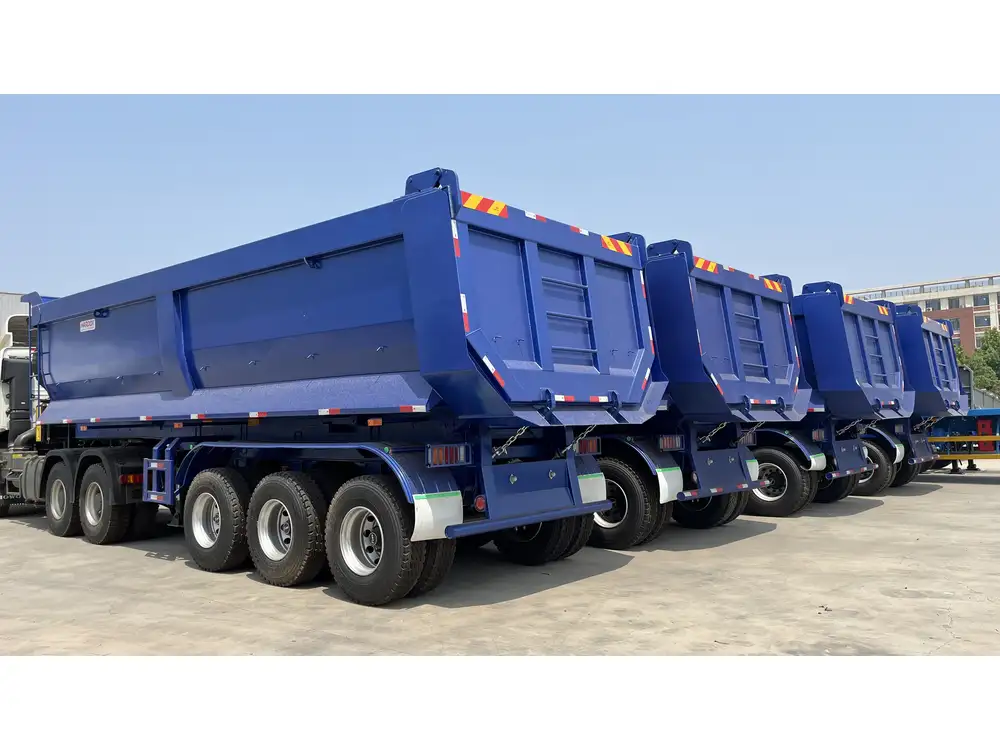Leasing a flatbed trailer involves a myriad of considerations, from understanding the basic costs involved to grasping the potential advantages and drawbacks. Whether you’re a seasoned fleet manager or a newcomer to the logistics and transportation industry, having a clear grasp of leasing costs can significantly impact your bottom line.
Understanding the Flatbed Trailer Leasing Landscape
In the transportation industry, flatbed trailers serve a critical function. They are designed to carry oversized, heavy, or cumbersome loads, enabling businesses to transport goods efficiently. Leasing these trailers rather than purchasing them outright can offer flexibility and financial advantages.
Types of Flatbed Trailers
Before diving into costs, it’s vital to understand the various types of flatbed trailers available on the market:
| Type of Trailer | Description |
|---|---|
| Standard Flatbed | The most common type, suitable for various load sizes. |
| Step Deck | Features a lower deck for taller loads, providing height versatility. |
| Drop Deck | Similar to step deck but with a more pronounced drop to accommodate taller cargo. |
| Conestoga | Comes with a retractable tarp; ideal for protecting cargo. |
| Heavy-Duty Flatbed | Designed for extremely heavy loads, often with reinforced structures. |

Factors Influencing Leasing Costs
When deliberating on how much it costs to lease a flatbed trailer, several factors come into play:
- Trailer Type
- Lease Duration
- Mileage Limits
- Maintenance Responsibilities
- Down Payment and Security Deposits
- Market Conditions
Each of these elements contributes to the total cost a business should expect when leasing a flatbed trailer.
Costs Breakdown: What to Expect
Average Monthly Leasing Costs
The average monthly cost to lease a flatbed trailer can vary significantly based on the factors mentioned above. Generally, businesses can expect costs to range between $800 and $2,500 per month. Here’s a nuanced breakdown:
- Standard Flatbed Trailers: $800 – $1,200 per month
- Step Deck Trailers: $1,200 – $1,800 per month
- Drop Deck Trailers: $1,500 – $2,000 per month
- Conestoga Trailers: $2,000 – $2,500 per month
- Heavy-Duty Flatbeds: $2,500+ per month

Additional Costs to Consider
When calculating the total cost of leasing, it’s essential to consider various additional costs:
- Insurance Premiums: Many leases require you to carry insurance, which can range from $100 to $300 monthly, depending on coverage options.
- Maintenance Costs: If the lease agreement stipulates you’re responsible for maintenance, set aside about $200 to $400 monthly.
- Fuel Costs: Depending on the load and distance, fuel can significantly affect overall operational expenses.
- Inspection Fees: Trailers must often pass regular inspections, which can carry fees of $50 to $150, depending on local regulations.
Comparison with Buying
To illustrate the financial implications further, let’s compare leasing vs. purchasing:
| Cost Factors | Leasing (Monthly) | Buying (Monthly Payment) |
|---|---|---|
| Monthly Payment | $800 – $2,500 | $1,200 – $4,000 |
| Maintenance Responsibility | Often Included | Out of Pocket |
| Depreciation | N/A | Typically 15% – 20% annually |
| Mileage Limits | Average Limits | Unlimited |
From the table, it becomes evident that leasing provides a lower initial monthly cost, particularly beneficial for businesses with tight cash flow.
Benefits of Leasing a Flatbed Trailer
Leasing a flatbed trailer also comes with notable advantages that can support your business strategy:
- Cash Flow Management: Lower upfront costs and monthly payments help preserve capital for operational expenses.
- Flexibility: Leasing allows you to adjust your fleet size and equipment based on changing business needs.
- Access to Latest Models: Leasing frequently offers the newest equipment, allowing businesses to benefit from improved technology and fuel efficiency without the financial burden of ownership.
- Tax Deductions: Lease payments can often be deducted from taxable income, providing significant financial advantages.

Drawbacks of Leasing
Understanding the potential disadvantages is equally crucial. These may include:
- Mileage Limits: Leases often impose mileage restrictions that could be detrimental for companies needing to transport freight over large distances.
- Long-Term Costs: Over an extended period, lease payments may surpass the cost of owning a trailer outright.
- No Asset Ownership: At the end of the lease, businesses typically do not own the trailer, meaning no equity accrues over time.
Strategies for Reducing Leasing Costs
To maximize your leasing experience without compromising on quality, consider implementing these strategic tactics:
- Leverage Negotiation: Engage with potential lessors about contract terms—everything from monthly payments to down payments can sometimes be negotiated.
- Shop Around: Prices and lease structures vary widely across dealerships; take time to compare multiple offers.
- Consider Long-Term Leases: While initially daunting, opting for longer lease durations often reduces monthly payments significantly.
- Evaluate Your Needs: Only lease what you truly need; unnecessary equipment can incur additional costs.
Key Considerations Before Leasing
Before making any commitments, ensure that you ask these essential questions to potential lessors:
- What’s included in the maintenance responsibilities?
- Are there any hidden fees?
- What happens at the end of the lease term?
- Can I purchase the trailer at the end of the lease?
Having a clear understanding of these elements will significantly aid decision-making.

Conclusion
In conclusion, the costs associated with leasing a flatbed trailer can vary enormously, dictated by the type of trailer, lease duration, and additional expenses that may arise. A thorough evaluation of both leasing advantages and drawbacks, coupled with a strategic approach to negotiations, can allow businesses to align their logistics solutions with their financial capacity and long-term objectives. By leveraging this comprehensive guide, you can navigate the complexities of flatbed trailer leasing with greater clarity and confidence, ensuring that your transportation needs are met both effectively and affordably.
Arming yourself with this knowledge can elevate your business operations while keeping costs manageable—ensuring that your investments yield maximum returns in the challenging landscape of logistics and transportation.



